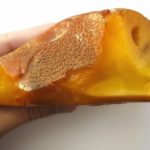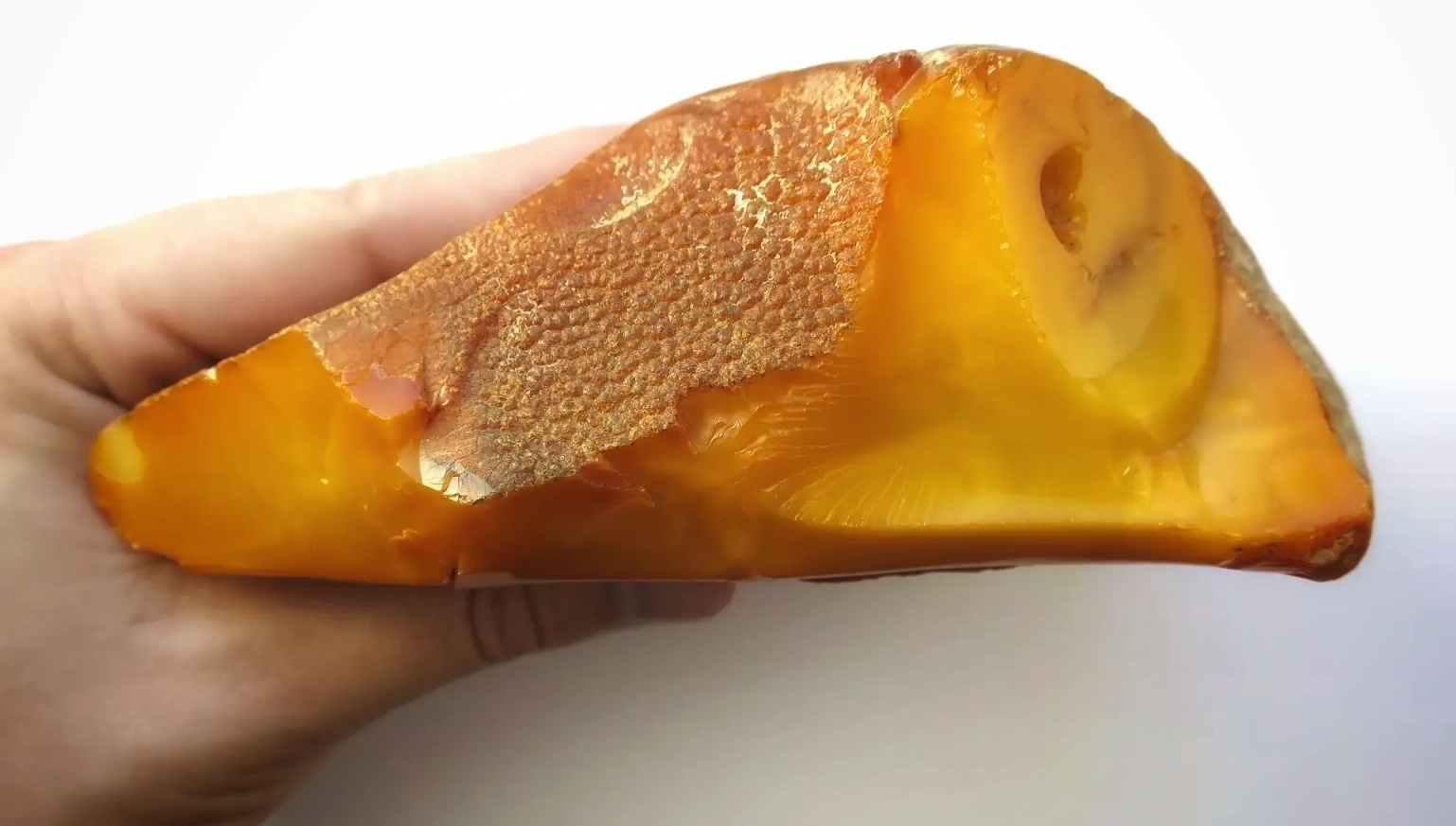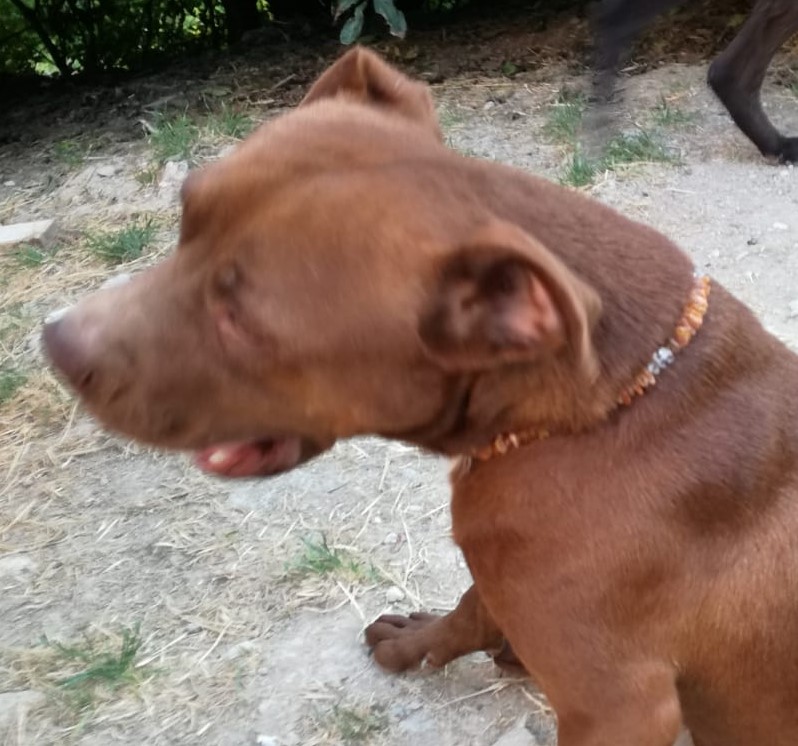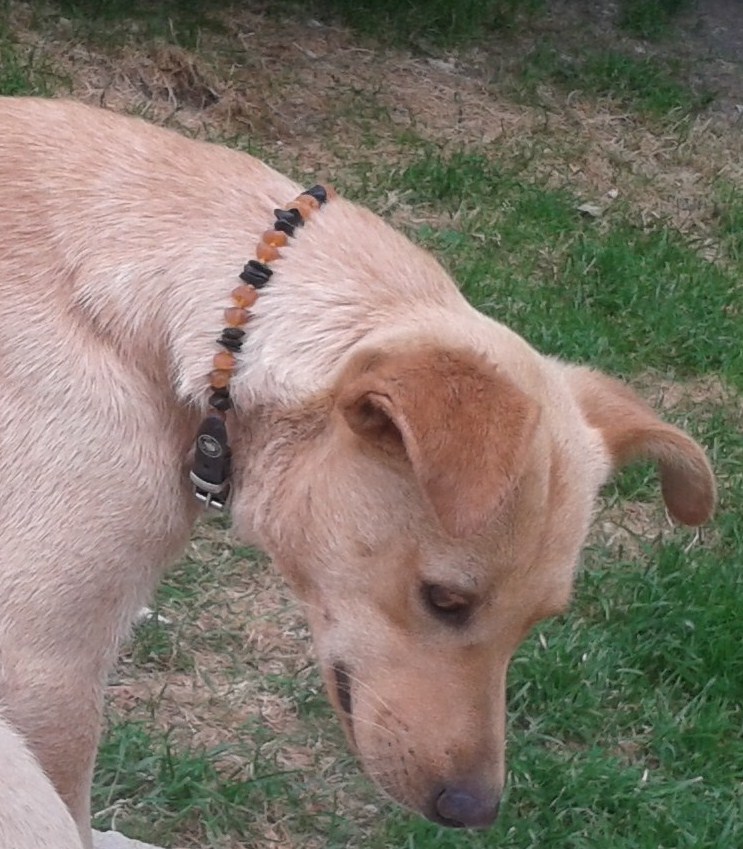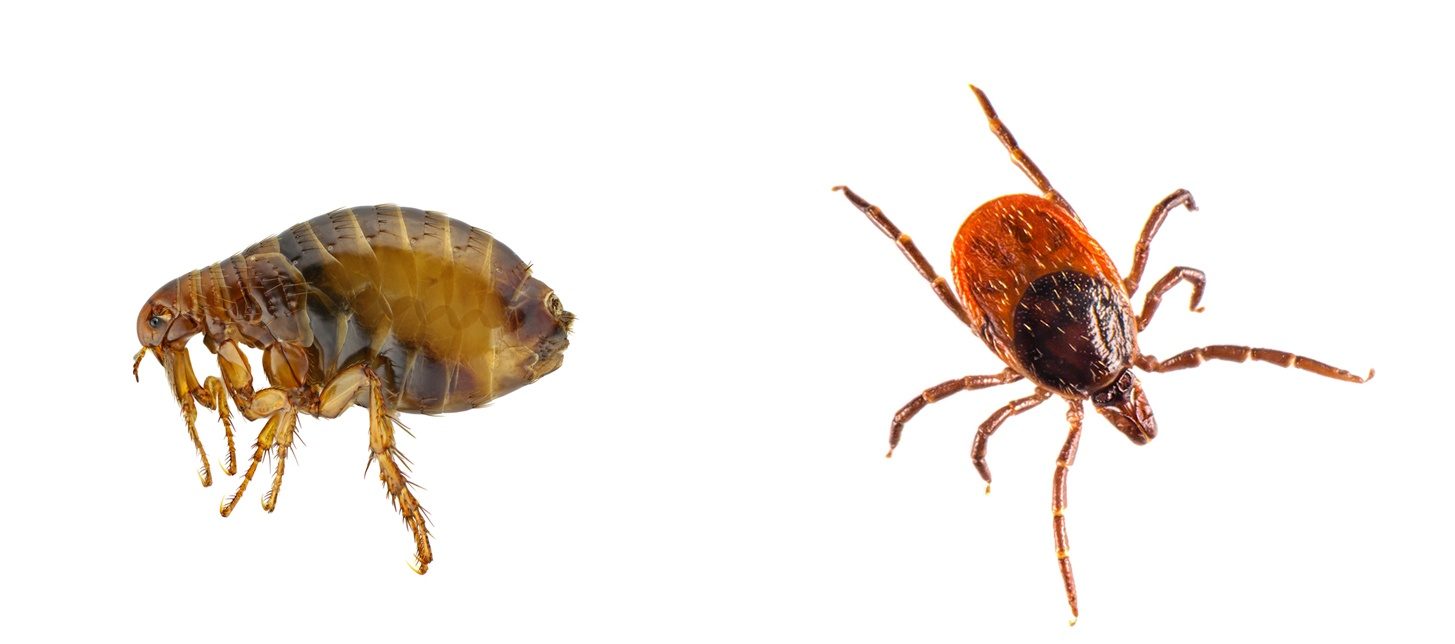
Great Pet Health – Ticks, Fleas & Prevention
Fleas and ticks are external parasites that can cause discomfort, itchiness and transmit diseases.
Fleas
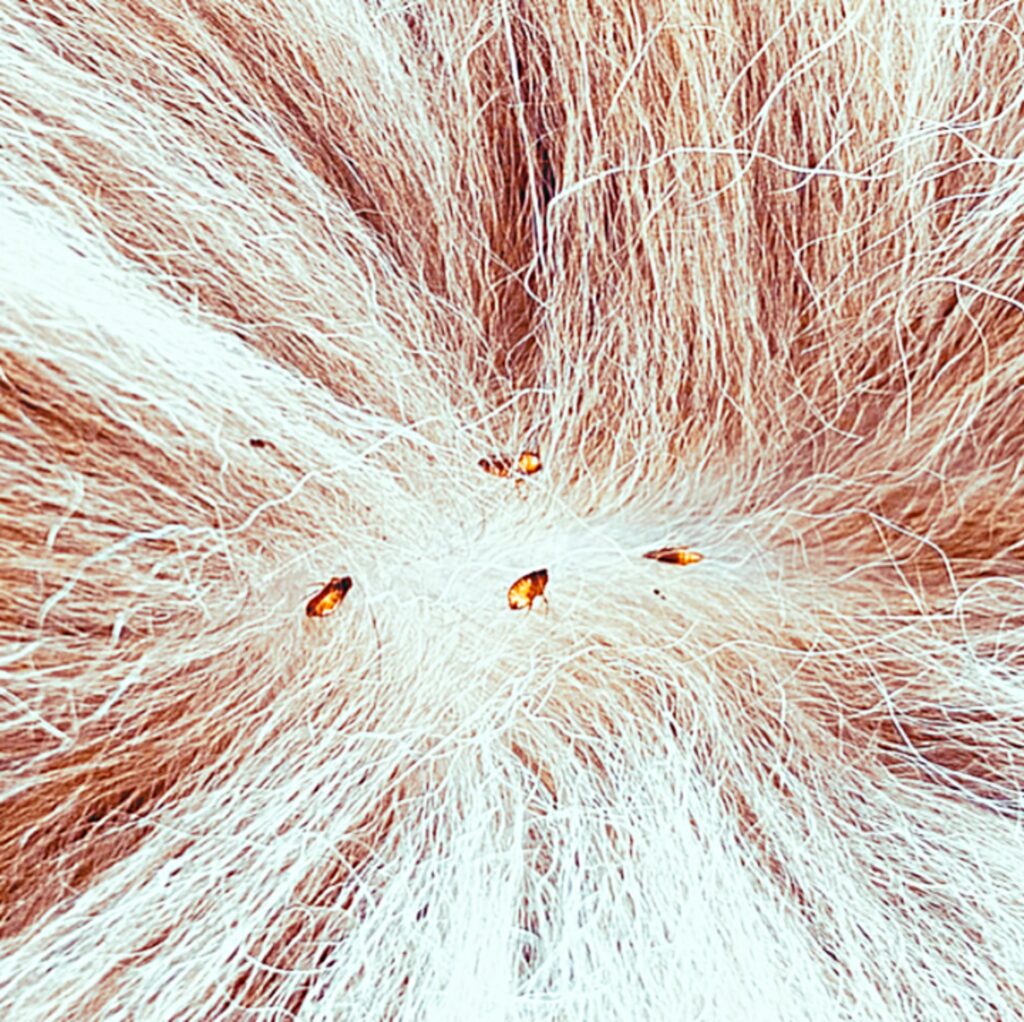
Fleas are external bloodsucking parasites that feed on the blood of mammals and birds. They can be the vector of contagion of various microorganisms responsible for several infections.
Fleas are wingless and have the body flattened laterally and divided into three regions: head, thorax and abdomen, they have 3 pairs of articulated legs and are equipped with an external skeleton that encloses all the organs and systems. Adults have a pungent and sucking mouth apparatus and are easily found in the debris collected with a vacuum cleaner (therefore, beware of re-infestations from incorrect and/or late removal of collected waste).
Adult fleas are small, the most common species in Italy are 1 – 2 mm long and their body has a fairly uniform brownish color. Each adult female flea lays, during the life, from several tens to a few hundreds of eggs. From the eggs the larvae emerge, from which, by metamorphosis, the adults are formed.
Flea bites produce small lesions that can cause the animal pain and very intense itching and scratching, with the risk of damaging the skin and promoting superinfections.
Ticks
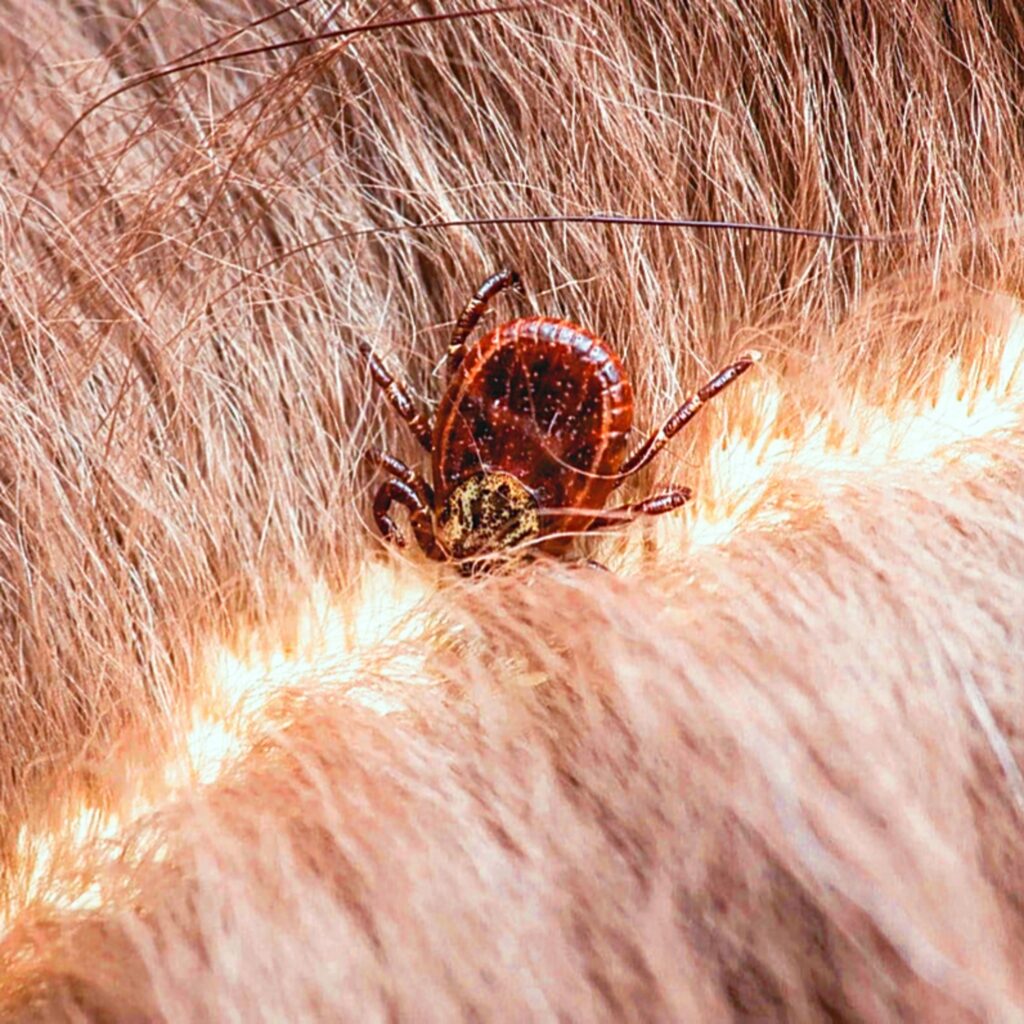
Ticks are arthropods, belonging to the same family as spiders, mites and scorpions. They are external parasites ranging in size from a few millimeters to about 1 centimeter, depending on the species and the stage of development. The body is rounded, the head is equipped with a buccal apparatus called the rostrum, capable of penetrating the skin and sucking blood.
Tick bites themselves can be painful and irritating but not dangerous, the risk lies in the possibility of contracting infections transmitted by these animals as vectors. They are in fact capable of transmitting various pathologies.
The activity of ticks is closely related to temperature and humidity and is generally limited to the warm season. During the winter months they tend to protect themselves from the cold by taking refuge in the crevices of walls, under vegetation or stones or buried in the ground. As temperatures rise, they re-emerge and remain active until the following autumn.
Their preferred habitat is places rich in grassy and shrubby vegetation, with cool and humid microclimate, however ticks can also be found in areas with a hot and dry climate or where the vegetation is sparse. Their presence essentially depends on the presence on the territory of hosts to be parasitized, which is why stables, animal sheds and pastures are among their favorite habitats.
Ticks do not jump or fly on their victims but wait on the tip of plants for the passage of an animal or human. Due to the carbon dioxide and heat emitted by the body, they sense the presence of a possible host and climb onto it, stick the rostrum into the skin and begin to suck blood. The bite is generally painless because they emit a substance containing anesthetic principles. They generally remain attached to the host for a period ranging between 2 and 7 days and then drop spontaneously, to take refuge in some crevice where they die; their body will protect the eggs which will mature after a few weeks, giving birth to a new generation.
Prevention
Why prevention is so important
Fleas and ticks can carry and transmit diseases, which is why preventing infection is important. Amber Pet Collars have a wide range of natural solutions to prevent your pet from infestation.
What happens when not prevented
Fleas commonly cause tapeworm infections and skin infections (flea allergy dermatitis), whereas common tick-borne diseases include anaplasmosis, Lyme disease, ehrlichiosis, Rocky Mountain spotted fever and more. Both fleas and tick-borne diseases can be zoonotic (meaning they are able to spread infections to humans), so keeping them off pets is also important to maintaining the health of the humans living and interacting with them.
The ultimate natural solution
Amber Pet Collars are created by hand in the heart of Tuscany, Italy and are made from authentic, quality baltic amber which contain natural substances to deflect ticks and fleas from your pet.
Read: How Amber Pet Collars work
